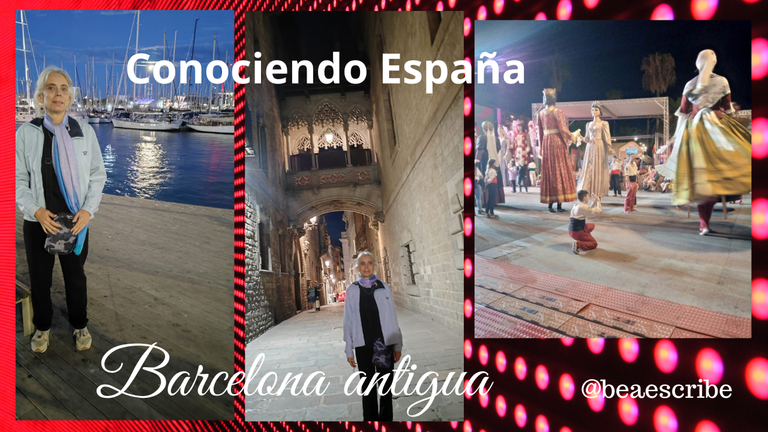
BARCELONA: UNA CIUDAD DE ALMA VIEJA

Antes de visitarla imaginaba a Barcelona una ciudad moderna. Sabía, por supuesto, que tenían zonas muy antiguas, había escuchado hablar del barrio Gótico, medieval; pero luego de las olimpiadas del 92, evento para el que se habían hecho importantes remodelaciones a la ciudad, me la imaginaba distinta, más moderna, pues. La parte contemporánea, desde mi punto de vista, lucía gris, descuidada, detenida en el tiempo. La impresión que tuve, como lo expreso en el título, es que la ciudad condal, tiene un alma vieja, como debe sucederle a muchas ciudades de Europa, en las que la Historia (con mayúscula) tiene un gran peso.
Eso a mí no me pasó en Madrid, por ejemplo, que había conocido unos meses antes, ni en Málaga. Que igualmente tienen monumentos antiguos. No me dieron esa sensación de estar detenidas en el tiempo. Las ciudades, como las personas, son entes vivos, cambiantes, con el paso del tiempo pueden transformarse. Y en las ciudades con historia distingues los cambios arquitectónicos, según te mueves en distintas zonas de la ciudad. Pero es que aún en las zonas más contemporáneas, Barcelona parece haberse detenido en el tiempo, a pesar de ser la segunda ciudad más grande de España, detrás de Madrid, la capital. Esa sensación se acentúa quizá porque vengo de una ciudad americana, Caracas, con poca historia, muy llena de luces, de neón, con mucho movimiento. Puede ser.
Como ya está dicho, en cada ciudad, hay varias ciudades. O bien porque la ciudad fue cambiando con el paso del tiempo, o bien porque en las distintas zonas de la ciudad se fueron residenciando grupos específicos que le han dado una determinada configuración. En este primer texto sobre Barcelona me gustaría describirles la Barcelona antigua, tal como la vi.
Les Gegants

El día que llegué a la ciudad, ya casi al anochecer, había una festividad en el puerto que forma parte de las tradiciones de la ciudad y de Cataluña, el baile de los gigantes, una tradición que tiene 600 años. La referencia más antigua es de 1424. Estos muñecos enormes representan a reyes, nobles y figuras míticas locales, se vinculan a la identidad cultural regional y la historia de las comunidades. Te comparto algunas fotos.
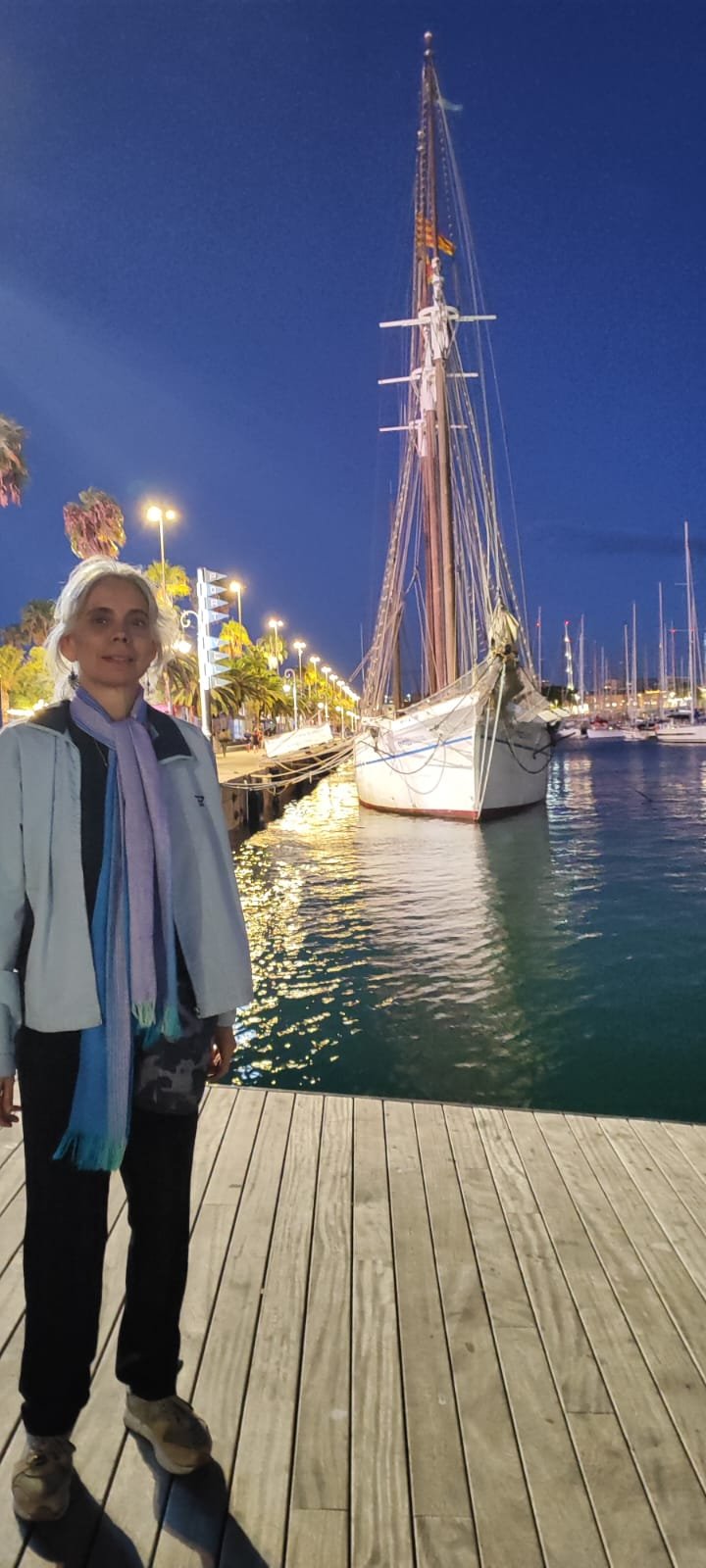
Puerto de Barcelona al anochecer

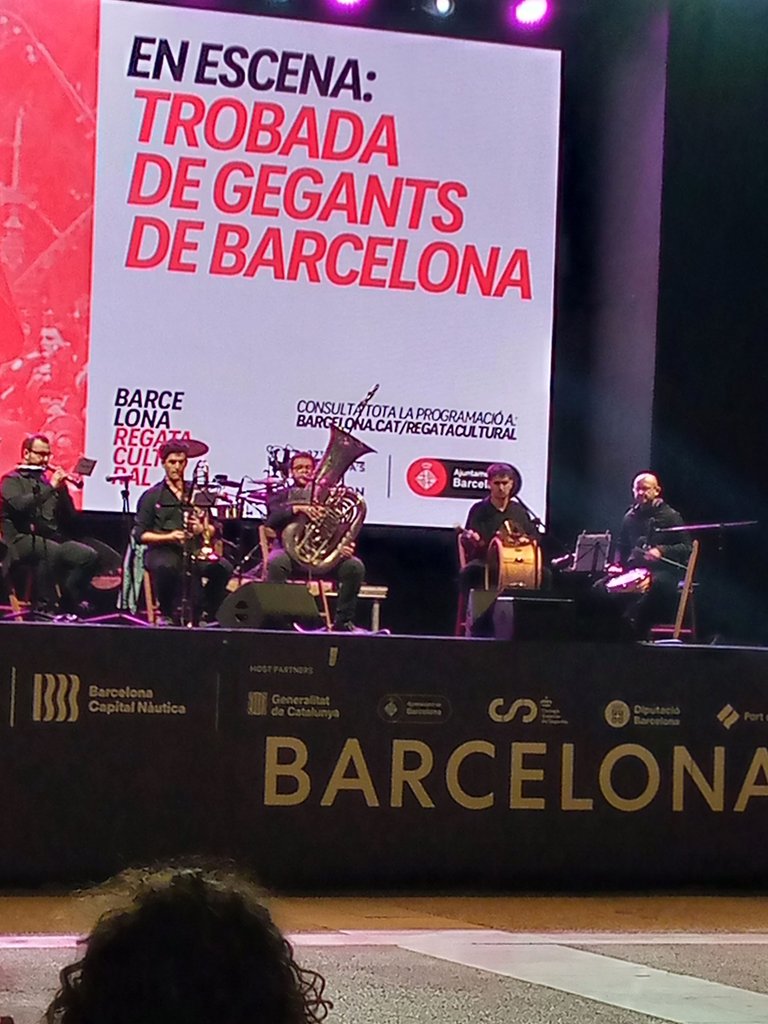

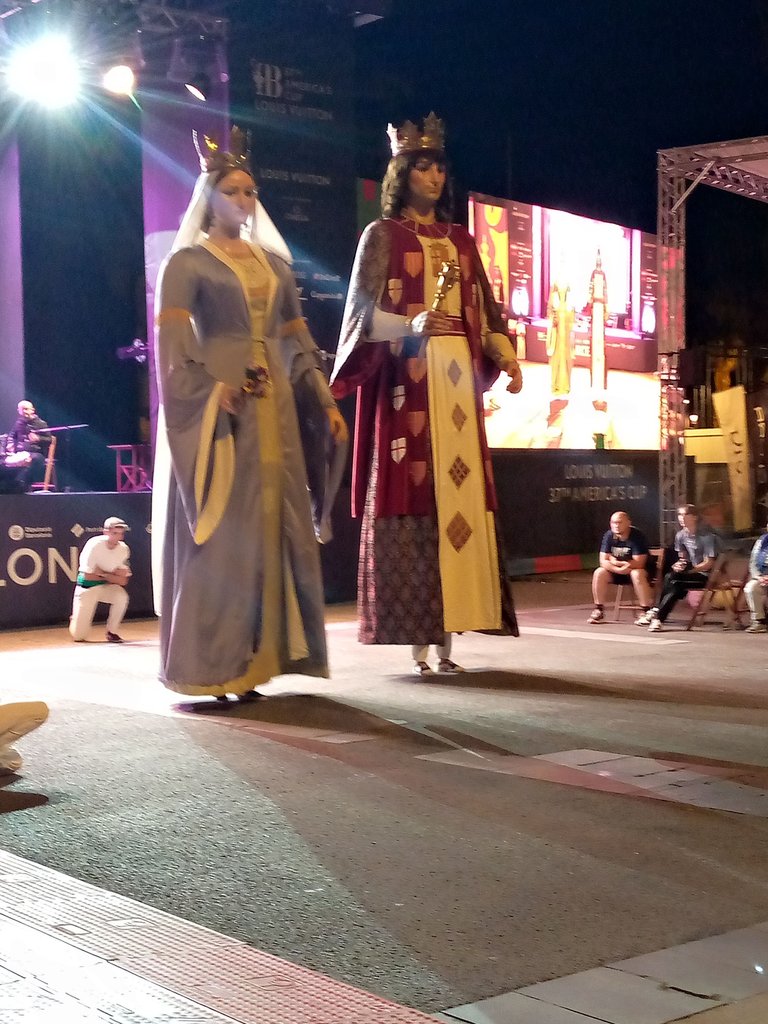



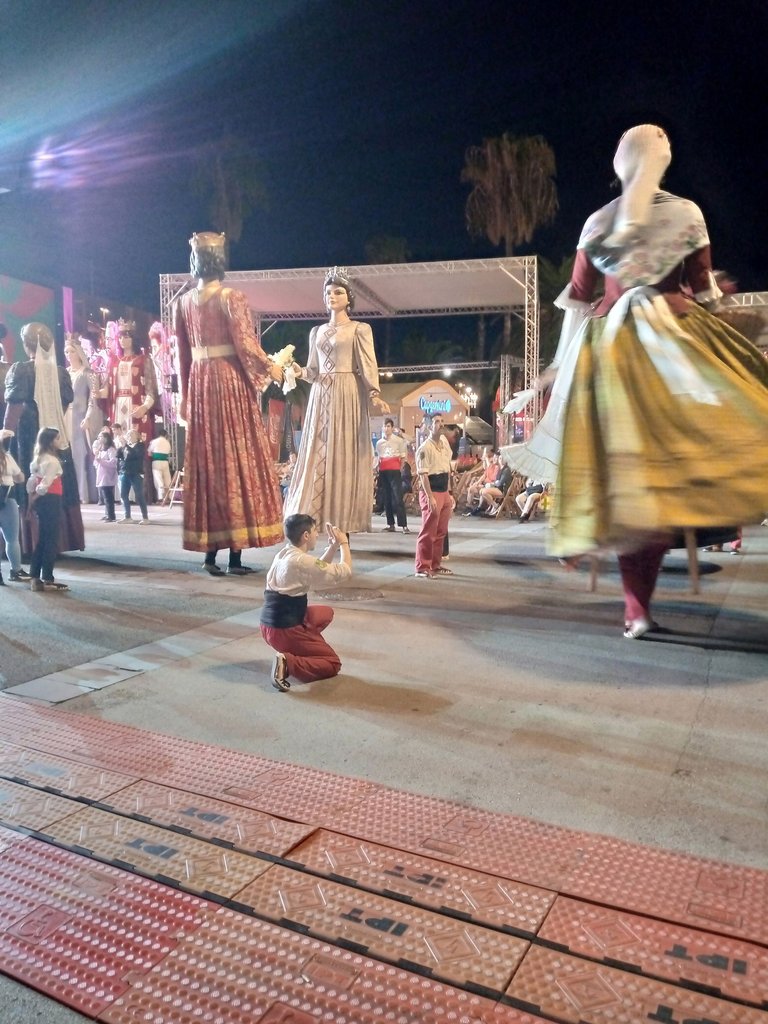

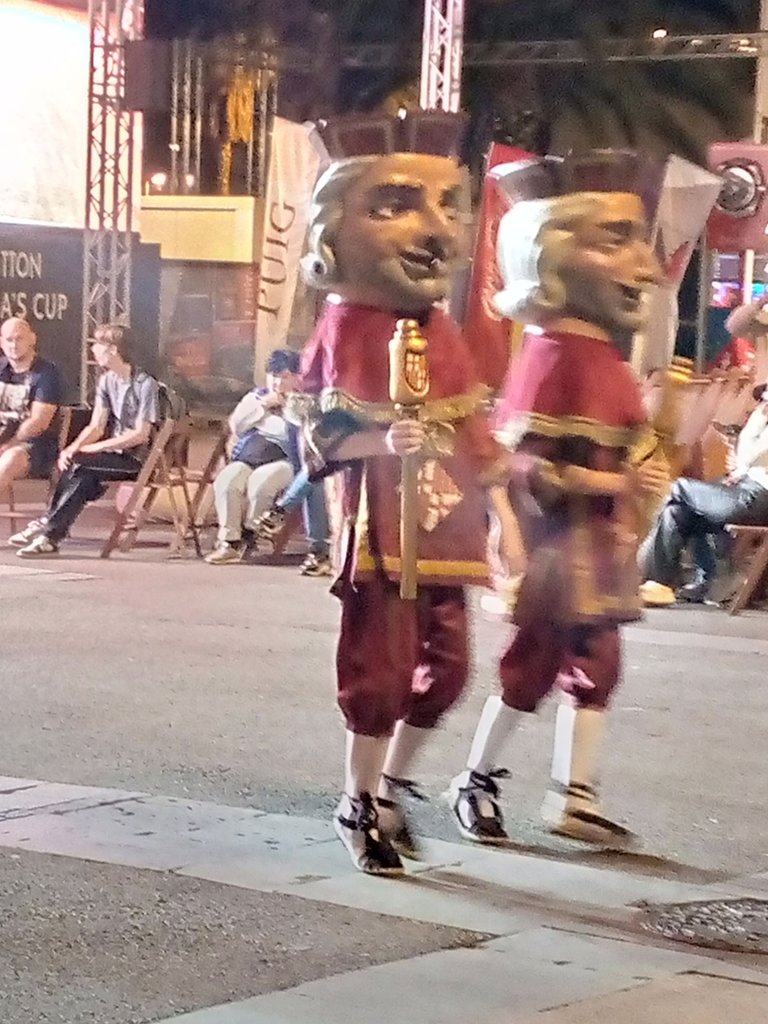

El Barrio Gótico

Imaginar la Edad Media sólo como una época oscura es un estereotipo que la hace misteriosa y terrible. Cuando visitas cualquier monumento arquitectónico de la época te imaginas reyes envenenados, pestes, caballeros andantes venciendo torneos para conquistar alguna reina o princesa o luchando en alguna batalla. Visité por primera vez el barrio gótico de Barcelona cuando ya había anochecido y me encantó, por supuesto; pero a cada paso me parecía que iba a aparecer el fantasma de algún caballero que había perdido la cabeza, me mantuve muy cerca de Daniel. Casualmente, nos habíamos hospedado en la zona.
La catedral de Barcelona
Leo en internet que los monumentos del Barrio Gótico, aunque parte de su estructura es ciertamente de origen gótico, han sido remodelados. La catedral, por ejemplo, fue construida entre el siglo XIII y XV, sobre una catedral románica, que a su vez, había sido construida sobre una iglesia visigoda. Su fachada, como la conocemos hoy, fue una remodelación realizada por el arquitecto Josep Oriol Mestres a finales del siglo XIX, tomando como criterio estilístico el estilo gótico. Pero eso no les quita encanto ni antigüedad a la catedral; como ya he dicho, las ciudades son espacios vivos, al igual que le ocurre a las personas, van cambiando con el tiempo.
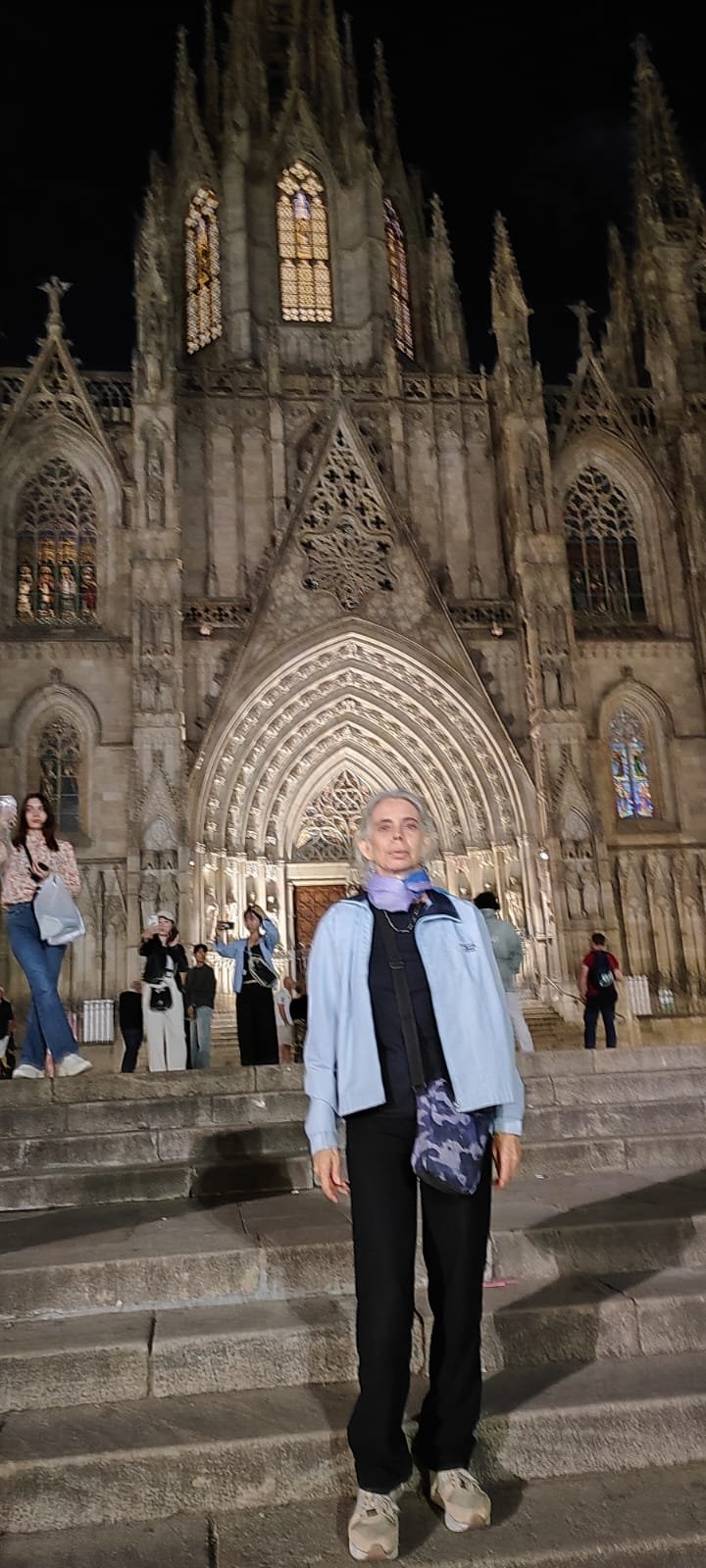
yo frente a la catedral de Barcelona

El puente de Rubió y Bellver
Otro espacio arquitectónico del Barrio Gótico que se señala por no ser realmente de origen gótico, es el Puente Casa del Canonges, construido en 1920 por el arquitecto Joan Rubió y Bellver. Más de cien años después ya tiene algo de historia. Al final lo importante de los lugares que quedan en nuestra memoria, no es que tengan certificado de autenticidad, sino la manera en que ellos nos gustan o disgustan, de qué forma su diseño, su estructura nos produce algún efecto. Les comparto una foto frente al puente de Rubió y Bellver.
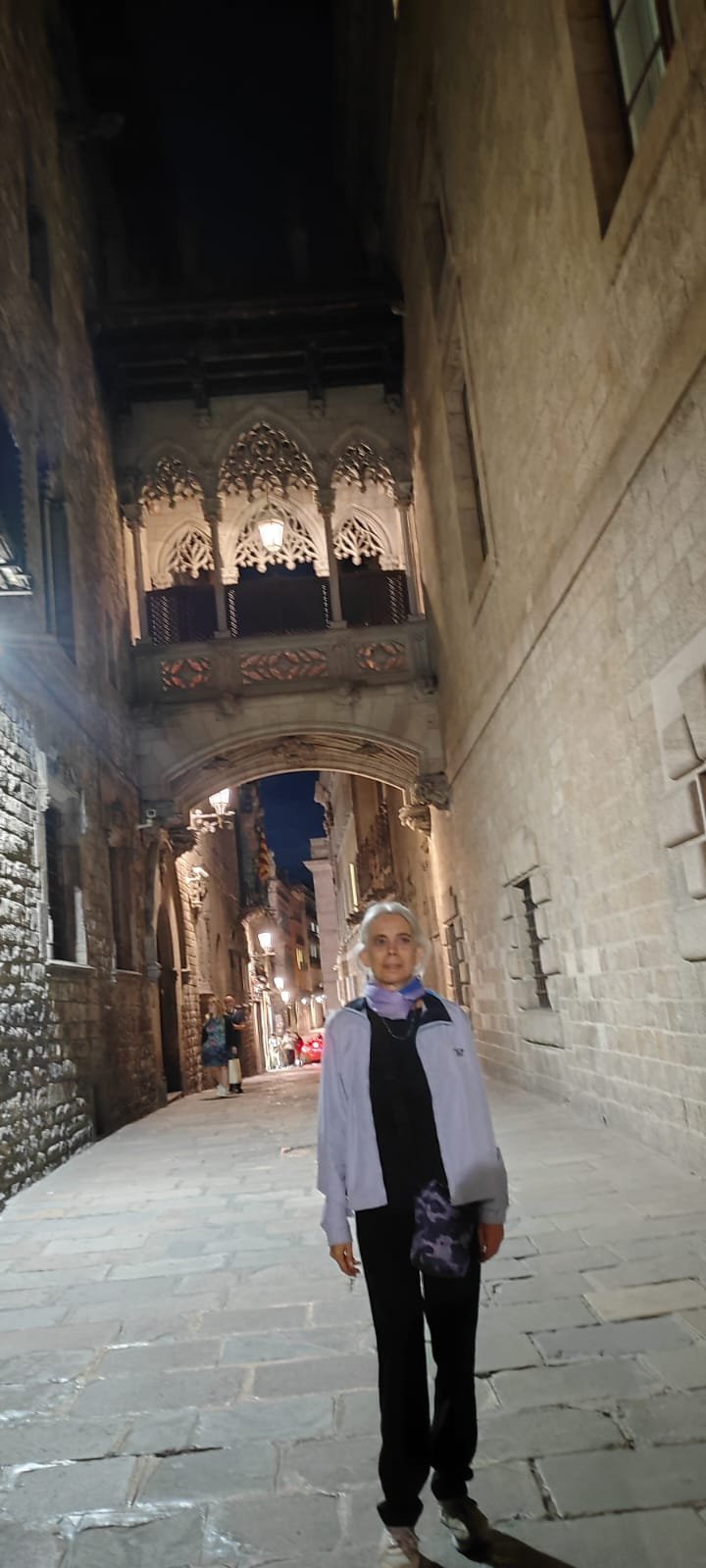
Yo frente al puente de Rubió y Bellver

La escultura de Antoni Llena
Una polémica escultura, que aunque no es antigua está ubicada en el Barrio Gótico, en la plaza Sant Miquel, es la escultura creada por Antoni Llena en homenaje a los “castellers”; quienes forman una torre humana de varios pisos de altura en las fiestas Cataluña y en algunas localidades de la Comunidad Valenciana. Esta inmensa escultura de 30 metros, a primera vista semeja un inmenso alambre de púas y si la ves de noche te resulta realmente inquietante. Indagando sobre la escultura me gustó mucho un detalle no visible a simple vista, en lo alto de la escultura hay una frase del poeta Paul Celan, "soy más yo si tú eres más tú".
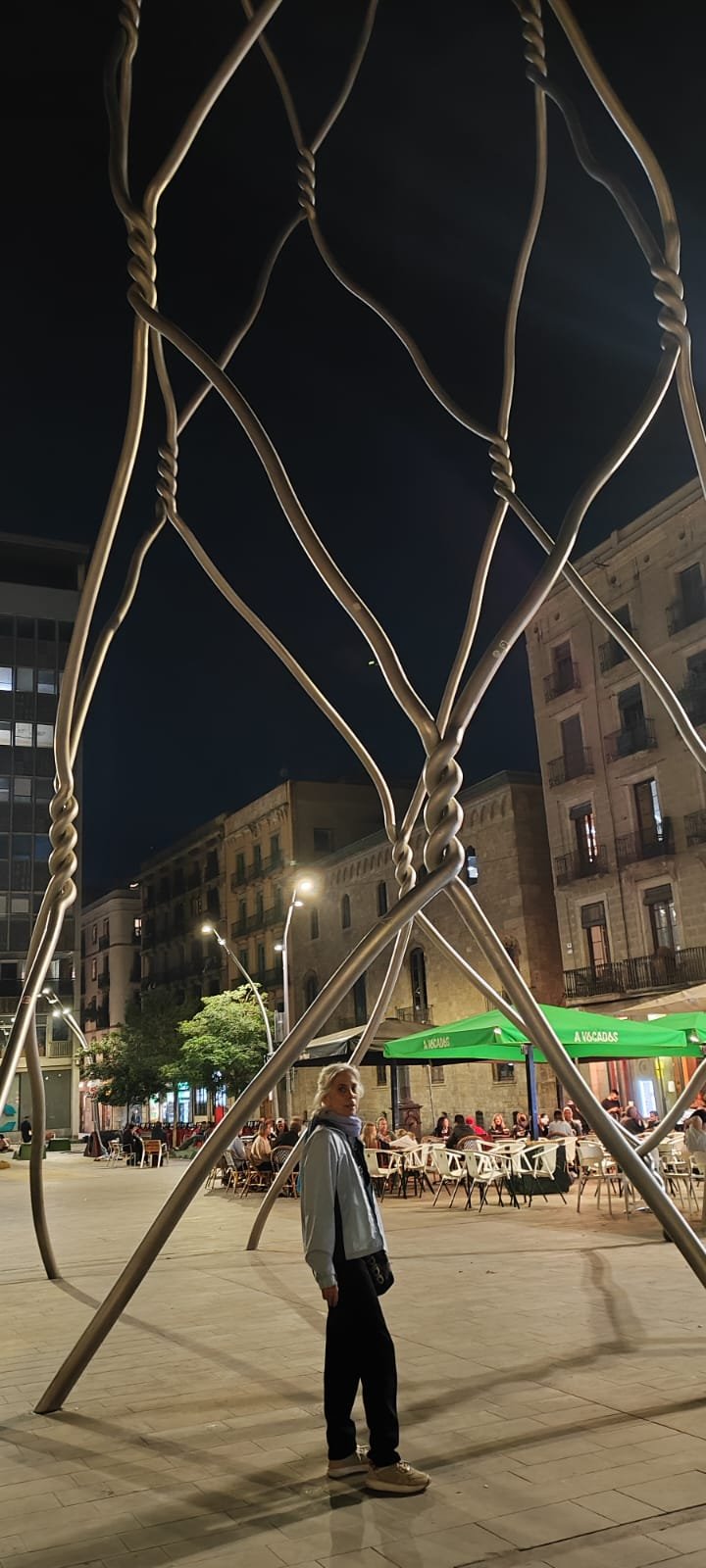
Escultura de Antoni Llena

¿Disfrutaste este breve recorrido por Barcelona? Todavía tengo cosas que contarte sobre la ciudad. En próximos artículos escribiré sobre la Barcelona modernista y las obras de Antoni Gaudí y sobre la Barcelona actual, en la que puedes irte de copas o participar en un slam poético. Gracias por tu lectura.
Las fotos que ves pertenecen a mi álbum de fotos personal

BARCELONA: A CITY WITH AN OLD SOUL

Before visiting, I imagined Barcelona as a modern city. I knew, of course, that they had very old areas, I had heard about the Gothic quarter, medieval; but after the 92 Olympics, an event for which the city had undergone major renovations, I imagined it to be different, more modern, well, I imagined it to be different. The contemporary part, from my point of view, looked gray, neglected, stopped in time. The impression I had, as I express in the title, is that the city of Barcelona has an old soul, as it must happen to many cities in Europe, in which History (with a capital letter) has a great weight.
That did not happen to me in Madrid, for example, which I had met a few months before, nor in Malaga. Which also have ancient monuments. They did not give me that feeling of being stopped in time. Cities, like people, are living, changing entities, they can change with the passage of time. And in cities with history you can distinguish the architectural changes as you move through different areas of the city. But even in the most contemporary areas, Barcelona seems to have stopped in time, despite being the second largest city in Spain, behind Madrid, the capital. That feeling is perhaps accentuated because I come from an American city, Caracas, with little history, very full of lights, neon, with a lot of movement. Maybe so.
As already mentioned, in each city, there are several cities. Either because the city has changed over time, or because specific groups have settled in different areas of the city, which have given it a certain configuration. In this first text about Barcelona I would like to describe the old Barcelona, as I saw it.
Les Gegants

The day I arrived in the city, almost at dusk, there was a festival in the port that is part of the traditions of the city and Catalonia, the dance of the giants, a tradition that is 600 years old. The oldest reference dates back to 1424. These huge dolls represent kings, nobles and local mythical figures, they are linked to the regional cultural identity and history of the communities. I share with you some photos.

Port of Barcelona at sunset










The Gothic Quarter

Imagining the Middle Ages only as a dark age is a stereotype that makes it mysterious and terrible. When you visit any architectural monument of that time you imagine poisoned kings, plagues, knights walking to conquer tournaments to conquer some queen or princess or fighting in some battle. I visited for the first time the Gothic quarter of Barcelona when it was already dark and I loved it, of course; but at every step I felt that the ghost of some knight who had lost his head was going to appear, I kept very close to Daniel. Coincidentally, we had been staying in the area.
Barcelona Cathedral
I read on the internet that the monuments of the Gothic Quarter, although part of its structure is certainly of Gothic origin, have been remodeled. The cathedral, for example, was built between the 13th and 15th century, over a Romanesque cathedral, which in turn, had been built over a Visigothic church. Its facade, as we know it today, was remodeled by the architect Josep Oriol Mestres in the late nineteenth century, taking as stylistic criteria the Gothic style. But that does not detract from the charm and antiquity of the cathedral; as I said, cities are living spaces, just like people, they change over time.

me in front of Barcelona Cathedral

Rubió y Bellver bridge
Another architectural space in the Gothic Quarter that is noted for not really being of Gothic origin, is the Casa del Canonges Bridge, built in 1920 by the architect Joan Rubió y Bellver. More than a hundred years later it already has some history. In the end, the important thing about the places that remain in our memory is not that they have a certificate of authenticity, but the way in which we like or dislike them, in what way their design, their structure produces some effect on us. I share with you a photo in front of the bridge of Rubió and Bellver.

Me in front of Rubió and Bellver bridge

Sculpture by Antoni Llena
A controversial sculpture, which although it is not old is located in the Gothic Quarter, in Sant Miquel square, is the sculpture created by Antoni Llena in tribute to the “castellers”, who form a human tower several stories high in Catalonia and in some localities of the Valencian Community. This immense sculpture of 30 meters, at first glance resembles a huge barbed wire and if you see it at night you find it really disturbing. Looking into the sculpture I really liked a detail not visible to the naked eye, at the top of the sculpture there is a phrase of the poet Paul Celan, “I am more me if you are more you”.

Sculpture by Antoni Llena

Did you enjoy this brief tour of Barcelona? I still have things to tell you about the city. In future articles I will write about the modernist Barcelona and the works of Antoni Gaudí and about today's Barcelona, where you can go for a drink or participate in a poetry slam. Thanks for reading.
The photos you see are from my personal photo album.
Translation to english by Deepl.com













































